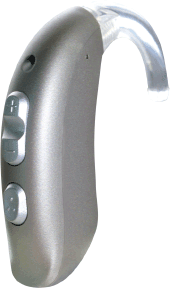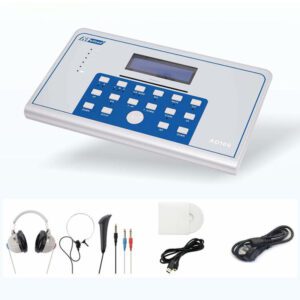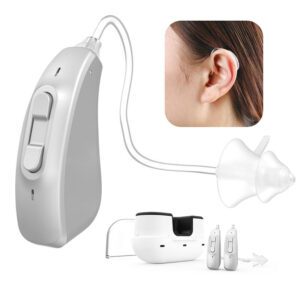
Behind the Ear (BTE) Hearing Aids are the world’s most common hearing aid style.
The ease of operation is one of the important reasons why Behind-The-Ear Hearing Aids are widely used. Especially for the elderly with inflexible hands and feet, the audiologist will recommend the elderly to use behind-the-ear hearing aids, which are larger and easier to replace the battery.
It like any other device has a variety of pros and cons. Continue reading for details that will help you decide if a behind-the-ear hearing aid is suitable for you.
Pros
BTE Hearing Aids have a range of advantages worth considering:
- If a hearing-impaired person with middle ear disease (such as otitis media, ear secretions, etc.) chooses an in-ear hearing aid, it is not only unfavorable for recovery, but also the secretion can easily affect the effect of the hearing aid, and even damage the hearing aid. Wearing a behind-the-ear hearing aid can alleviate or avoid the above conditions.
- Behind-the-ear hearing aids are also suitable for people with external ear deformities or those who cannot wear in-ear hearing aids after ear surgery.
- Compared with in-ear hearing aids, behind-the-ear hearing aids are larger in size and can install some complex circuits, chips, etc., which can enhance functions and improve sound quality.
- Because the BTE is larger than other styles, it can accommodate a larger battery, resulting in stronger amplification and long battery life.
- These devices are generally easier to handle than their smaller counterparts, making battery replacement and cleaning less difficult. It is also easier to repair if it fails.
- The shell does not need to be customized, and it can be worn directly after on-site debugging, which saves the time of waiting for the shell to be made (the customized machine needs to wait for a week or two).
- Because the development of the ear canal has not yet been finalized, children are not suitable for wearing a custom machine, so the behind-the-ear hearing aid is the first choice.
Cons
Of course, where there are advantages, there are disadvantages. No hearing aid is without disadvantages, so here are some factors worth considering:
- The biggest disadvantage of BTE hearing aids is that it is difficult to hide the fact that you are wearing a hearing aid. For those who want to camouflage, they can be hidden by purchasing a color that matches their skin tone.
- BTE hearing aids are also more susceptible to wind noise, but many models have features that help with this.
- The microphone hole is located above the auricle, and sweat can easily penetrate into this hole and other parts of the hearing aid, causing the hearing aid to failing.


